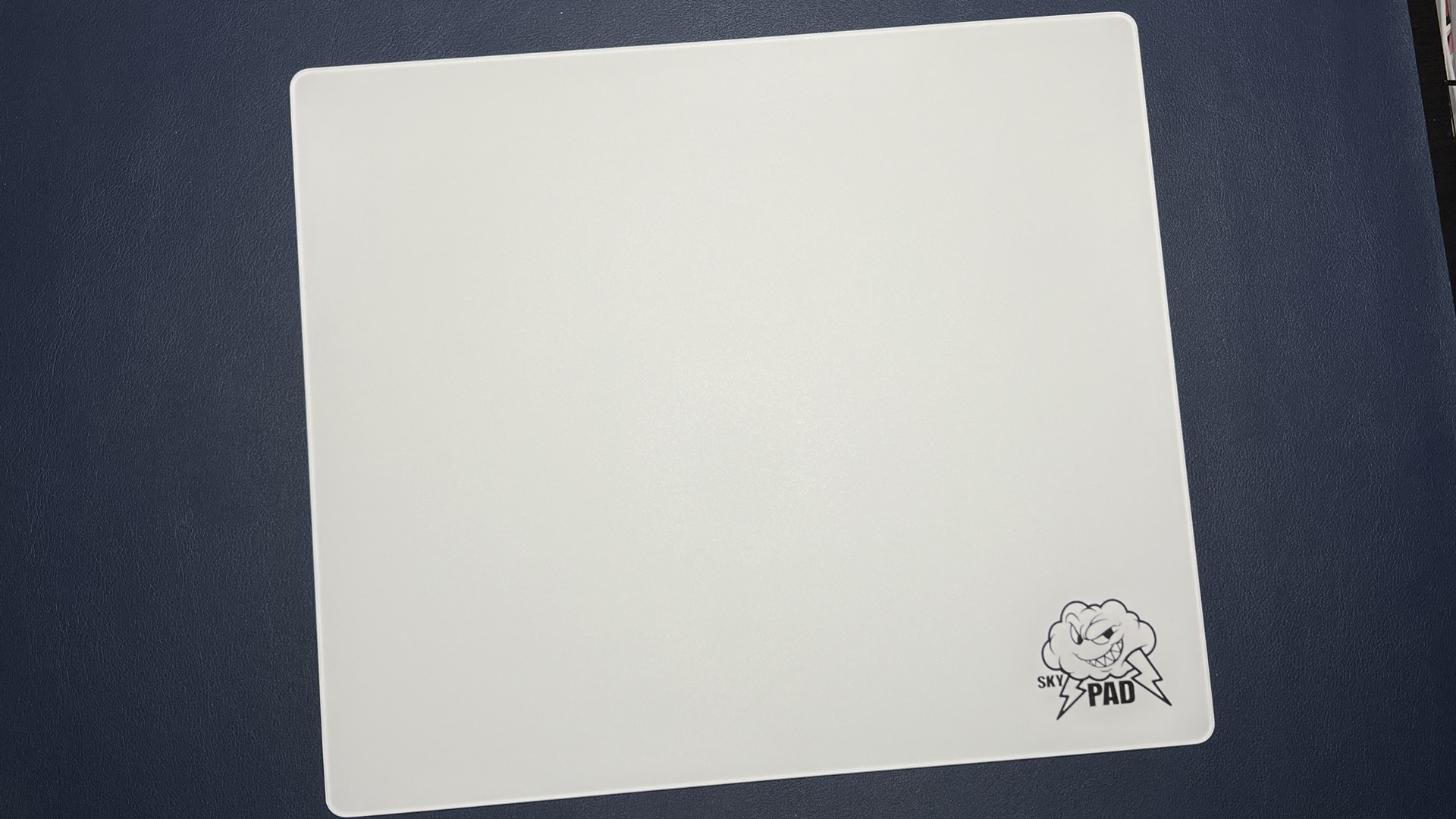
I only recently discovered the life-changing properties of a glass mouse pad — specifically, the Razer Atlas — but glass mouse pads are not a new phenomenon.
In fact, they’ve been around for about as long as gaming-specific PC peripherals have been around. Back in 2001 — when mice still had rollerballs on the bottom — the world’s first (according to the company) frosted glass mouse pad, aka the Icemat, debuted. It featured an acid-treated surface to better grip the mouse’s rollerball, and it was made of glass because glass attracted less dust and was also easier to clean than traditional cloth mouse pads. The company eventually moved away from glass to other materials (including steel) and away from making just mouse pads to making other peripherals, and in 2007 changed its name to SteelSeries.
SteelSeries doesn’t currently make a glass mouse pad, but the market wasn’t empty prior to Razer’s Atlas. If you search for glass mouse pads, one company tops the results: Skypad, an eSports gaming peripherals maker from Denmark. Skypad has been making glass mouse pads — it’s currently on the third iteration, Mousepad 3.0 — and accessories for glass mouse pads since 2017.
Design and Size of the Mousepad 3.0

Skypad’s Mousepad 3.0 comes in two sizes: regular, which measures 13.78 x 11.81 x 0.14 inches (350 x 300 x 3.6mm), and XL, which measures 19.69 x 15.75 x 0.14 inches (500 x 400 x 3.6mm). If you’re wondering, Razer’s Atlas is in between these two sizes — it measures 17.72 x 15.75 x 0.19 inches (450 x 400 x 5mm) — and I thought it was just a little too big. Likewise, I found Skypad’s XL Mousepad 3.0 too large to fit on the average desk — especially since it’s too small to fit under both your mouse and your keyboard. While I absolutely understand the appeal of having more surface area for mouse movement, one of the benefits of using a smooth glass surface is that you won’t have to move your mouse as much (though I suppose you can — this will, obviously, vary based on your play style).
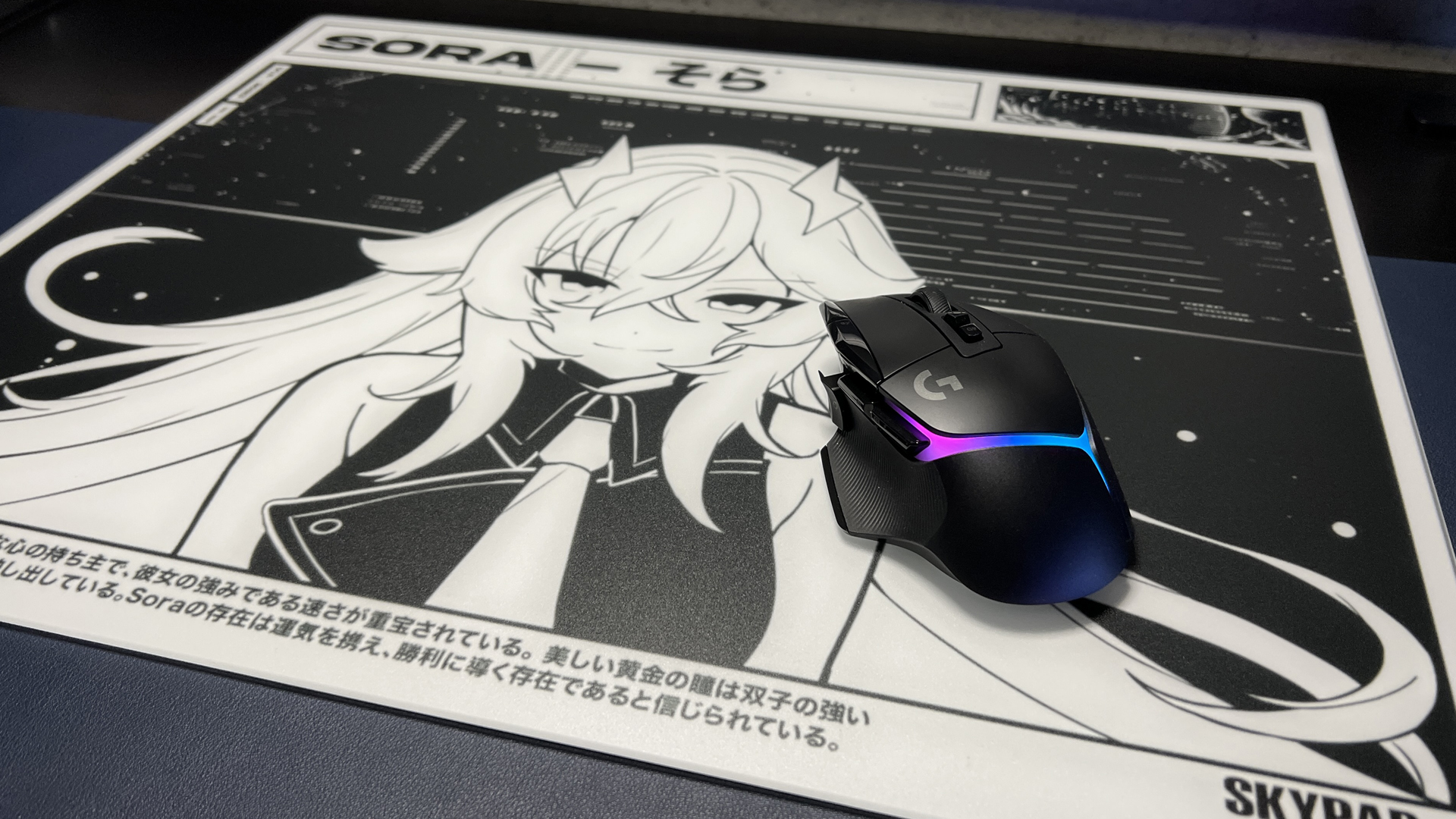
The Mousepad 3.0 comes in black and white colorways, and the XL Mousepad 3.0 can be purchased with Skypad’s cloud or text logo printed in the bottom right corner. These are the only options that are currently available (Razer’s Atlas also comes in black or white), but the company does occasionally do limited edition drops of its XL mouse pad, such as this black-and-white design featuring an original character named Sora.
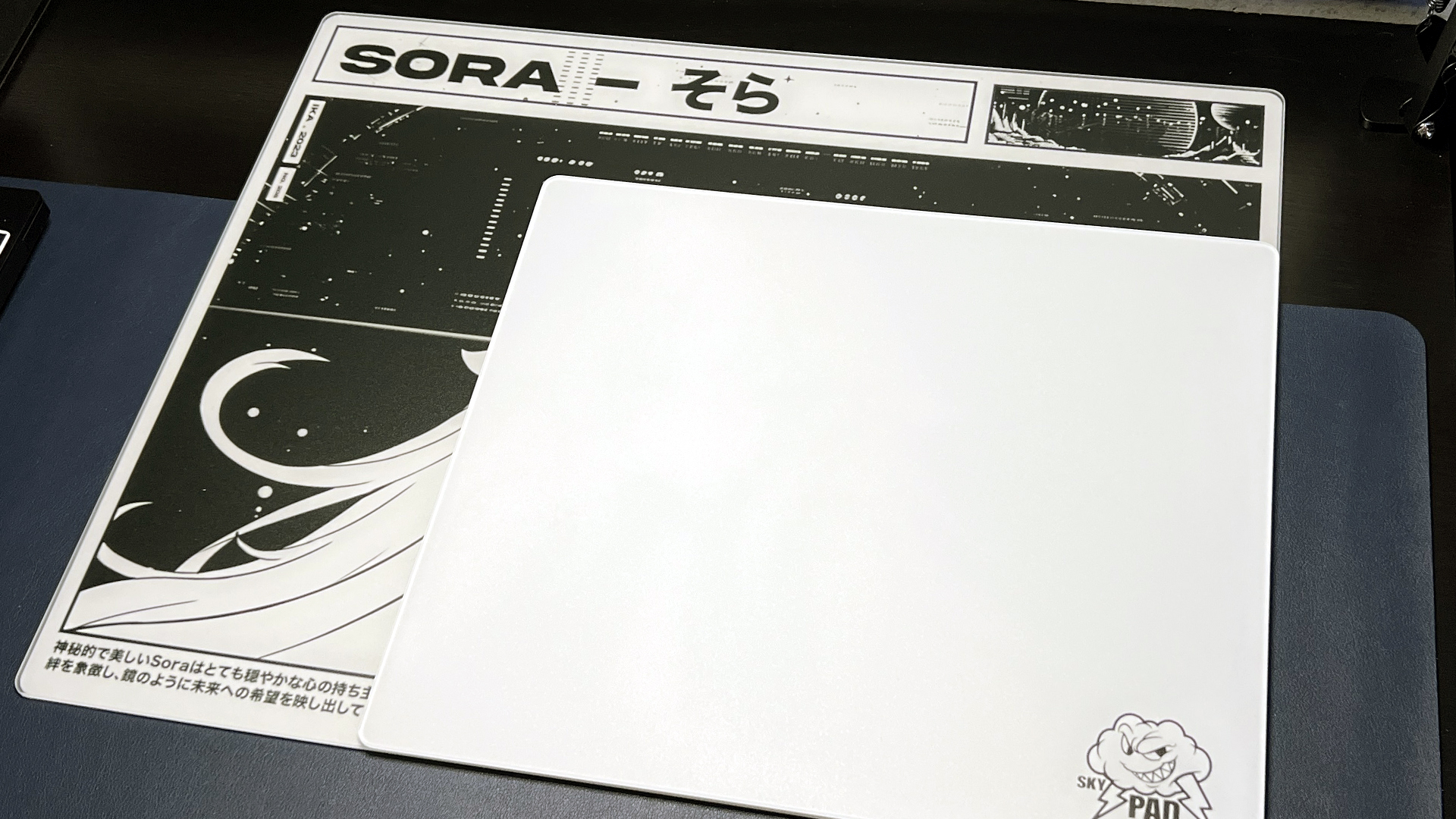
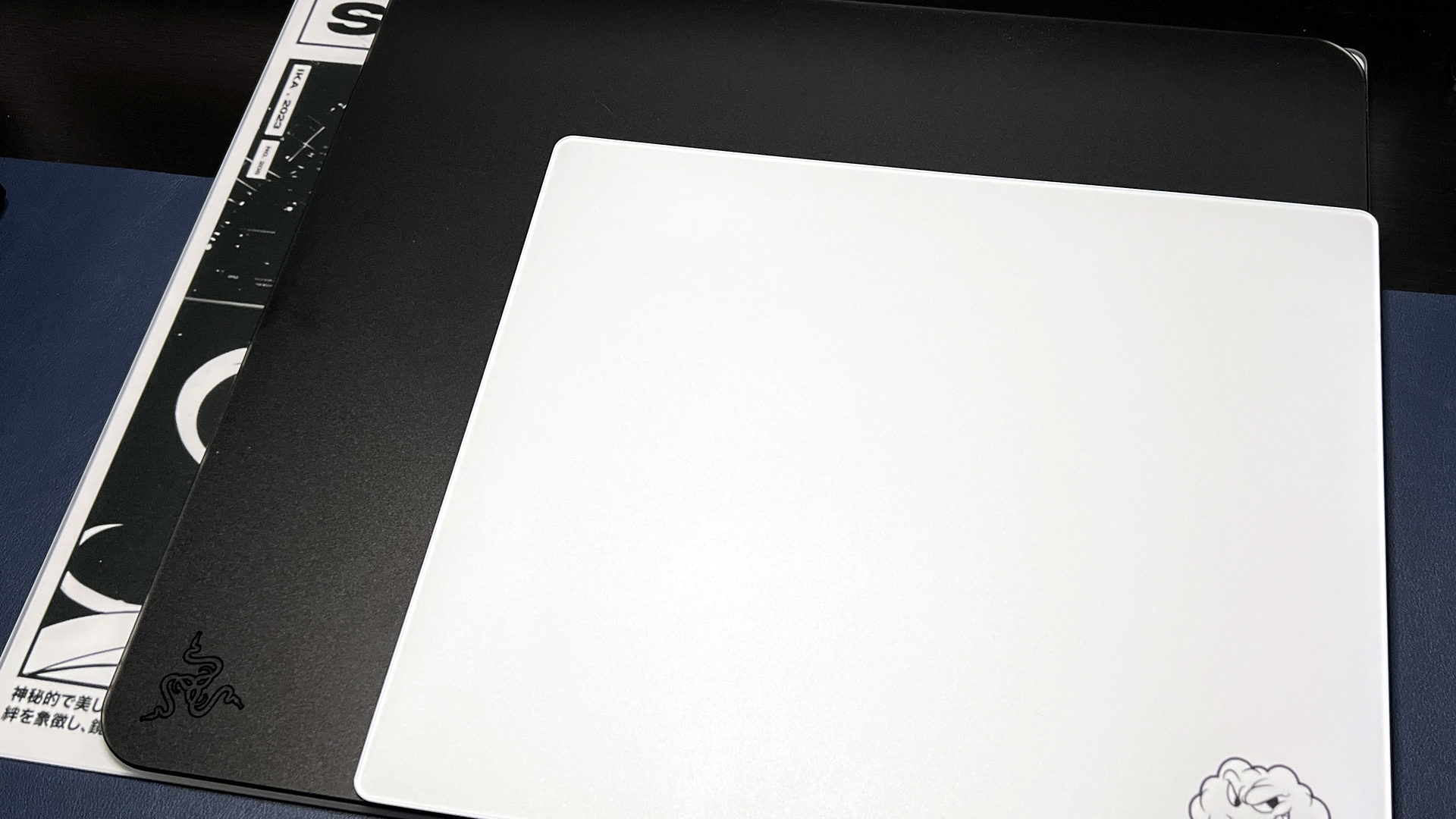
Skypad’s regular Mousepad 3.0 is a much more manageable size. It’s quite a bit smaller than the Atlas, and is what most people would probably consider a “standard” or medium-sized mouse pad. Because it’s glass, it doesn’t feel quite as small as a similarly-sized cloth mouse pad, since smaller swipes go further. It’s also not quite as smooth as the Atlas, so I did find myself moving my mouse over a larger area than I did with the Atlas (but still smaller than with a non-glass mouse pad). What I’m trying to say is that if you’re used to larger mouse pads, you’ll probably still have an adjustment period if you move down — the Mousepad 3.0’s glass surface doesn’t completely negate the size.
The Mousepad 3.0 is slimmer than the Atlas, at 0.14 inches (3.6mm) thick versus the Atlas’s 0.19 inches (5mm). That extra 1/20th of an inch (1.4mm) might not sound like it would make a noticeable difference, but it does. When I swapped out the Atlas for the Mousepad 3.0 for testing, the Mousepad 3.0’s slimness was immediately apparent. This might be partly due to the fact that my other mouse pad, which is currently under just my keyboard, is the Razer Strider Chroma, which is a hybrid pad that’s 0.16 inches (4mm) thick and feels much closer in height to the Mousepad 3.0 than it did to the Atlas. I didn’t find the Atlas’s thickness to be uncomfortable — and I still don’t — but after having tested both, I prefer the slimness of the Mousepad 3.0, especially for a smaller mouse pad that I wouldn’t be resting my entire arm on.
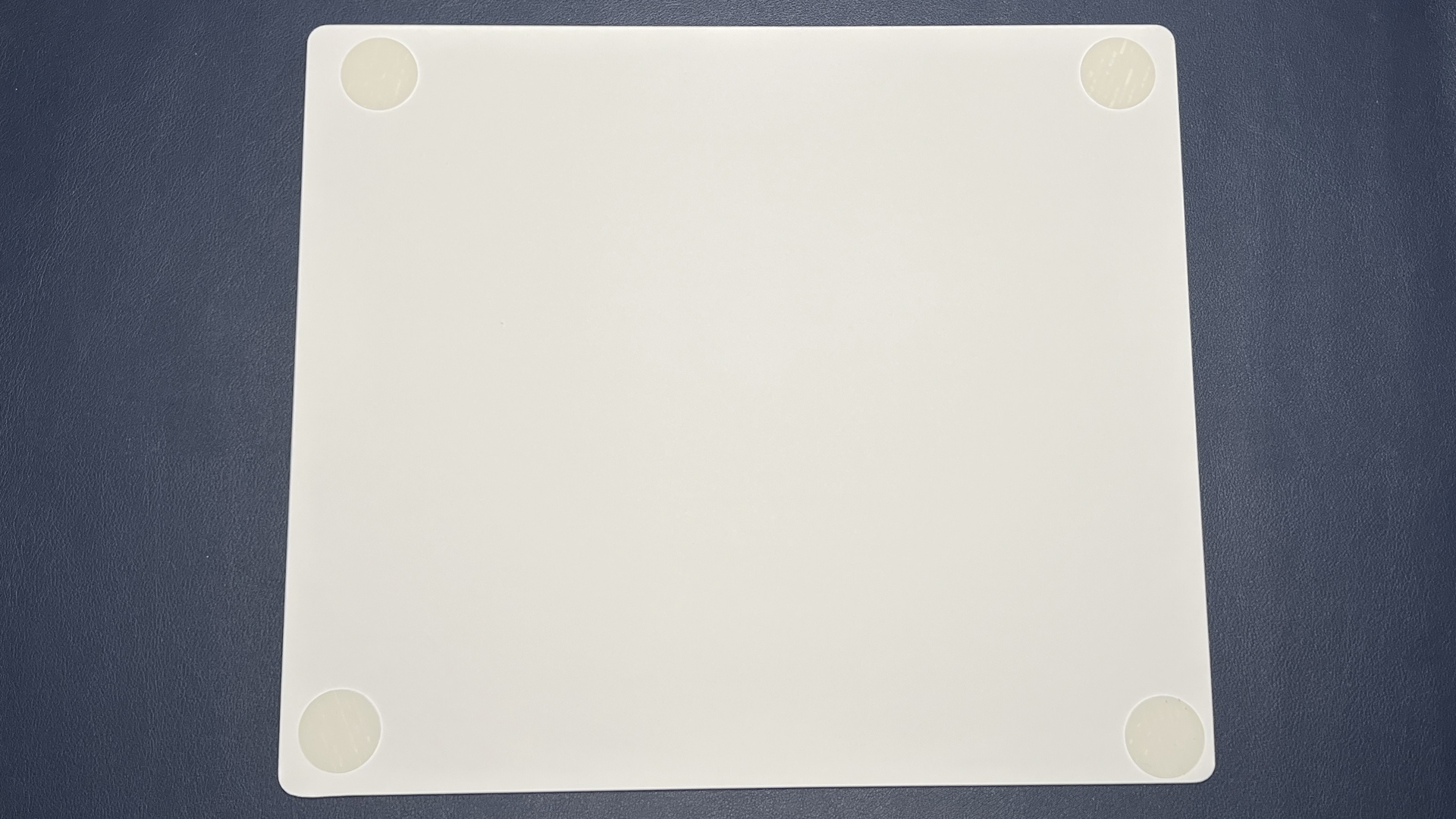
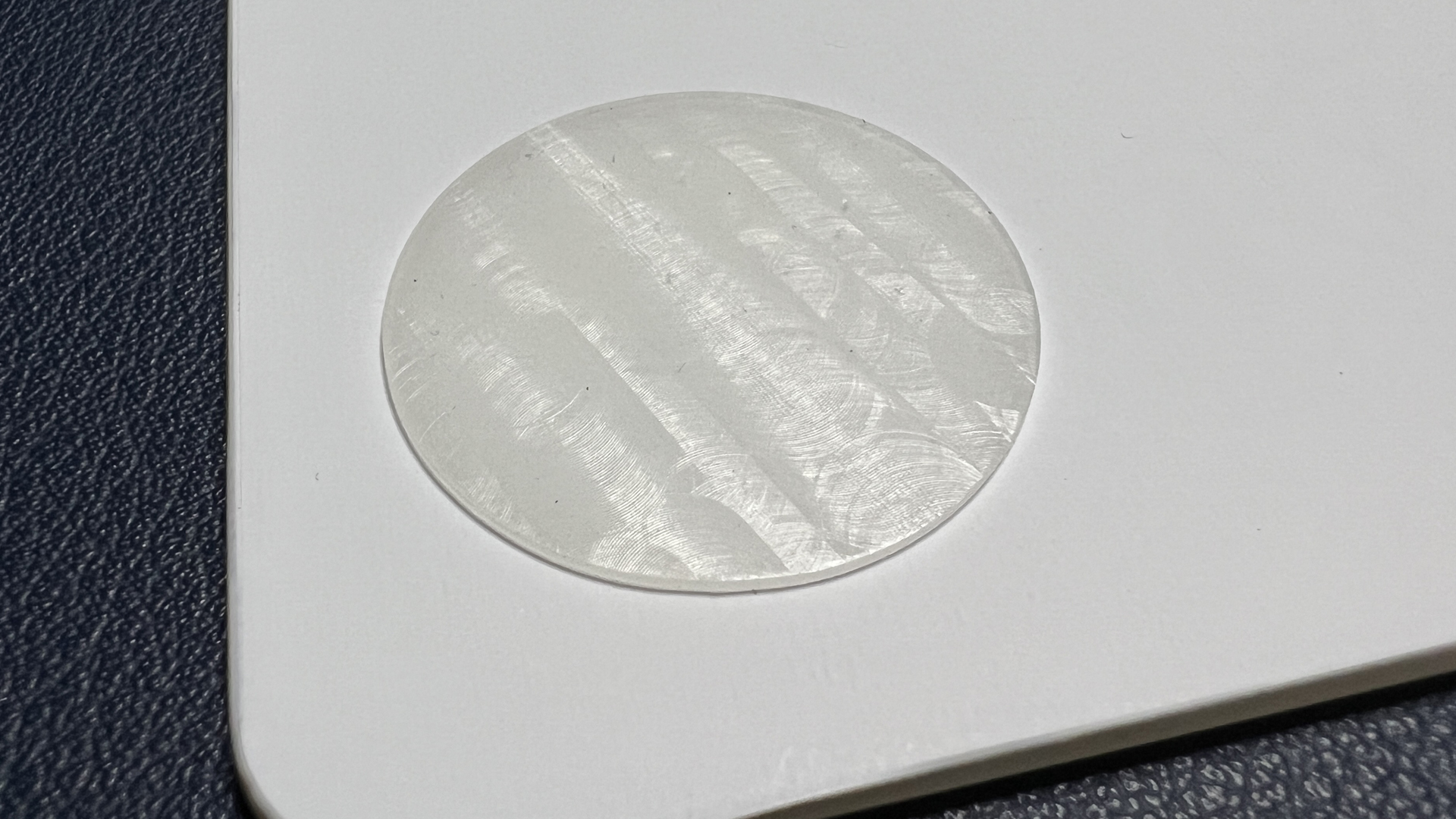
The bottom of the Mousepad 3.0 has four small circular anti-slip feet, which work very well. I had no issues with this mouse pad slipping or sliding — even slightly — in my testing. In fact, deliberately trying to push the mouse pad across my desk required a surprising amount of force (not a lot, just a surprising amount). This is, obviously, a good thing - the last thing you want a glass mouse pad to do is accidentally slip off your desk. The Atlas’s entire bottom is covered in textured anti-slip material, which doesn’t seem to work any better (or worse) at preventing slippage — but does seem to provide some very slight cushioning.
Specs
Durability of the Mousepad 3.0
The Mousepad 3.0 is made of tempered glass, but is “incredibly durable,” according to the company (which also told me to go ahead and drop it on the floor from varying heights). I happen to live in a factory-converted-loft with polished concrete floors, however, so I decided against haphazardly tossing it onto my floor... just in case it happened to break. I did consider taking it outside and dropping it on the street, but that didn’t seem very environmentally-friendly (even if I do live in downtown Los Angeles where the streets are full of broken glass anyway).
But also, I don’t think throwing a mouse pad — glass or not — against solid concrete is a very realistic use case. What’s the most that’s really going to happen to this mouse pad? It might slip out of your hands as you’re unpacking it to put it on your desk, or maybe you’ll get frustrated during a game and slam your mouse down, but that’s about it.
I did end up dropping it from various low heights (of between six inches and around three feet) onto an area rug in my apartment, and it’s still intact. Anyway, as you can see from this video, it’s possible that the Mousepad 3.0 would have survived me frisbee-ing it across the streets of Los Angeles, so it seems likely that it will also survive most realistic drop scenarios.
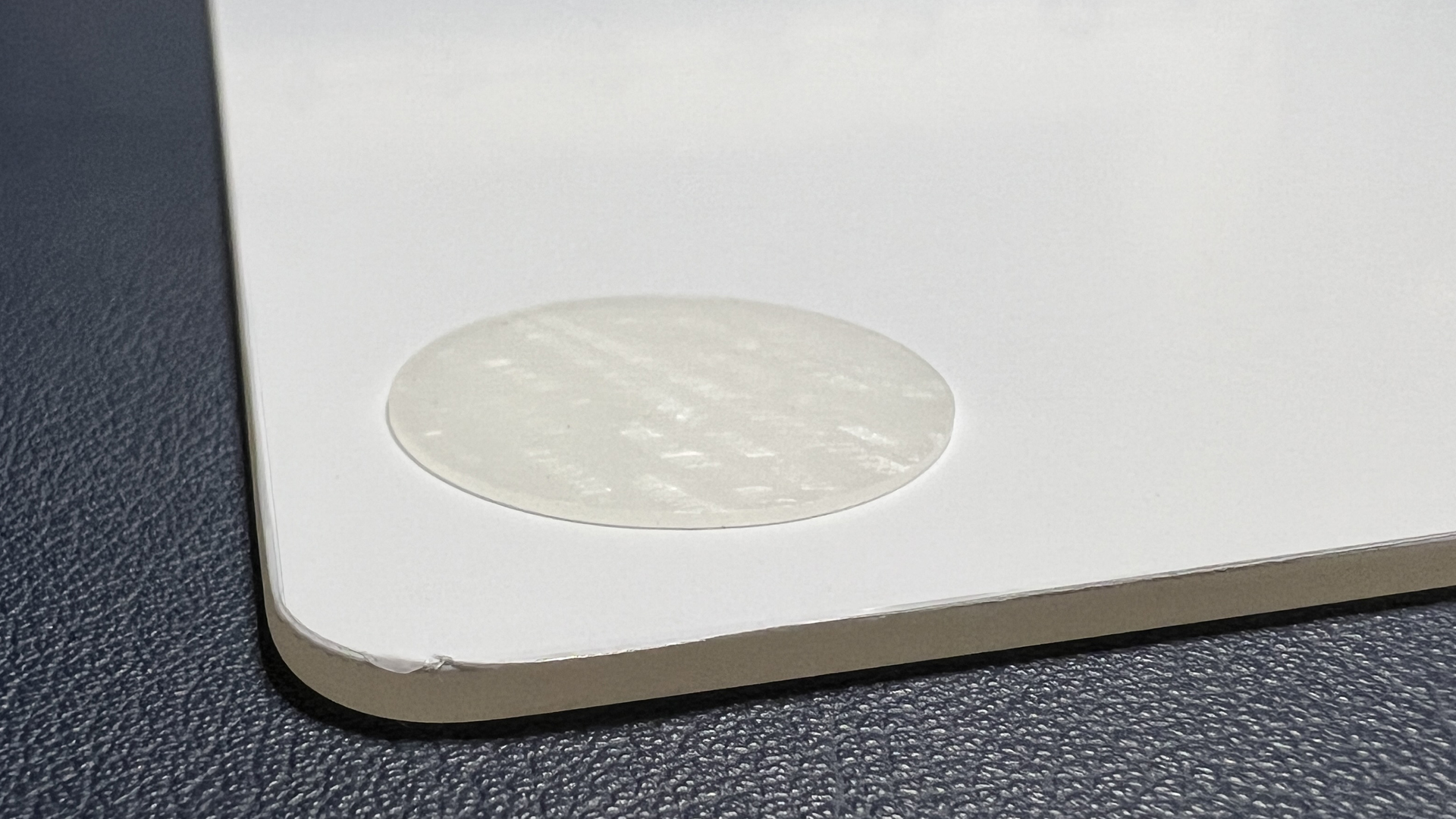
The Mousepad 3.0’s surface also seems fairly durable: the lightly-textured matte-finished glass is relatively scratch-resistant (it is glass, however, so it will scratch if you make an effort to scratch it). It doesn’t have any sort of special coating like the Atlas’s oleophobic coating, so it doesn’t require any special care — you can clean it with regular glass cleaner. What’s less durable is the stick-on backing, which can be pretty easily scratched off. Scratching the back of the pad won’t affect performance, of course, but it won’t look as pretty.
Tracking and Performance
The Mousepad 3.0 has a slightly textured, matte-finish surface designed for speed — specifically, Skypad says the surface is the “ideal roughness for achieving speed” as a mouse will essentially travel across microscopic peaks, limiting friction. The surface offers a smooth glide with a small amount of resistance from the glass’s texture — it’s not as slick as the Atlas’s oleophobic-coated surface, but the texture does make precise stopping easier to adapt to. Like other glass mouse pads, the Mousepad 3.0 has micro patterning etched into its surface for tracking accuracy.
I went ahead and tested the Mousepad 3.0 using all the mice I had within reach, including Razer’s Basilisk V3 Pro and Naga V2 Pro, Logitech’s G 502X Plus, Asus’s ROG Harpe Ace Aim Lab Edition, Mountain’s Makalu Max, HyperX’s Pulsefire Haste 2, Redragon’s M601 and M901, and even some $3 mouse I picked up years ago at Fry’s, back when Fry’s was still in business. None of the mice I tried had any issues with tracking accurately on the Mousepad 3.0 (on either colorway), except for the $3 mouse which has had some trouble tracking on every surface I’ve ever tried it on and probably has a polling rate of, like, 5 Hz.

While the Mousepad 3.0 does offer a very smooth, consistent surface, it didn’t quite give me the same dream-like awakening I had with the Atlas. The Atlas’s oleophobic coating — and perhaps the cushioning from the full rubber lining on the back — made for a slightly more comfortable experience overall. That’s not to say that the Mousepad 3.0 was uncomfortable, because it wasn’t (also, the difference wasn’t really that significant), but the Atlas somehow feels a little softer, as incongruous as that sounds. I did like the Mousepad 3.0’s slimmer profile, however. The Atlas was just thick enough to be noticeable, while the Mousepad 3.0 immediately felt like it was just part of my desk.
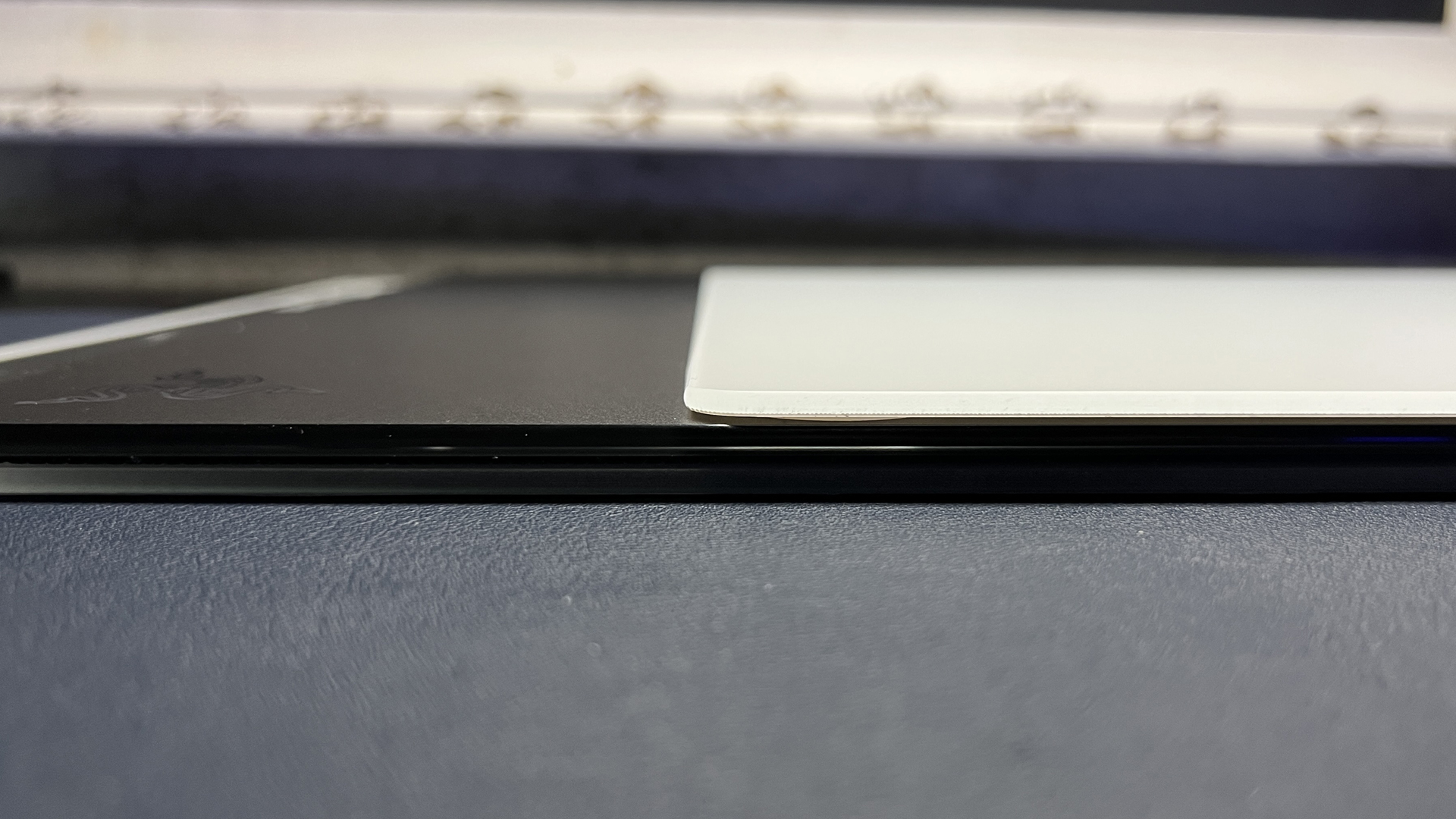
I also liked the Mousepad 3.0’s slightly textured surface for certain activities, such as pixel-precise actions in programs like Photoshop. But I still prefer a rougher hybrid (or cloth) mouse pad for that kind of detail or precision work, by a large margin — all hard mouse pads, glass or not, are much too slippery. The Mousepad 3.0’s textured surface also gave it a slight edge over the Atlas when it came to stopping power, because the Atlas is really slick.
The Pros and Cons of Glass
It seems glass mouse pads are the perfect hard surface mouse pads for performance-oriented gamers who need speed above all else: it’s hard to beat the glasstop combination of ultra-low friction and impressive tracking accuracy and precision.
But there are a couple of caveats I’ve discovered while testing the Skypad Mousepad 3.0 and the Razer Atlas. First, it’s a good thing they’re easy to clean, because they do need to be cleaned more frequently than other mouse pads. Dust buildup, especially, messes with glide on a glass mouse pad — and, since it has nowhere to go (unlike a cloth mouse pad, where it just kind of...works its way into the surface, I guess) quickly accumulates around your mouse’s feet and sensor, which will mess with tracking.
Second, while glass feels great under a mouse, it feels less great under your skin. Glass mouse pads are harder and colder than soft mouse pads, and I definitely started to miss the relative cushion and warmth of my hybrid mouse pad after weeks of using only glass. Also, sweat — while not an issue for me, but definitely an issue for many gamers — is definitely not fantastic on a glass mouse pad. Of course, you can always just wear long sleeves and gloves, but that might seem like overkill when you could also just get a different mouse pad. That said, Skypad does acknowledge these glass-specific issues, and even sells arm sleeve accessories to go with its pads.
Finally, if you’re the kind of gamer who picks up your mouse a lot, glass mouse pads are noisy — and that’s even if you’re not slamming your mouse down in frustration or rage. Razer claims the surface of its Atlas is “specially treated” to allow for quieter mouse swipes (quieter than other glass mouse pads, that is), but it’s not the swiping that’s noisy. Swiping on the Mousepad 3.0 was slightly louder than swiping on the Atlas, but it wasn’t excessively loud on either. Dropping a mouse on both pads was like dropping a mouse on a piece of glass, however — though the Mousepad 3.0 did have a little more reverb from being perched on non-slip feet (and not entirely lined with rubber).
The Bottom Line
If you’re looking for a glass mouse pad, Skypad’s Mousepad 3.0 is an excellent option. You already know I’m inexplicably in love with the Razer Atlas, and the Mousepad 3.0 is, frankly, very, very similar in feel and performance. My two main concerns with the Atlas were its size, because it felt just a little too large to be easily incorporated in most desk setups, and its durability — mostly because Razer warns against using soap or harsh cleaning agents to clean the Atlas’s surface, likely to prevent removal of the oleophobic coating.
Skypad addresses both of these concerns with the Mousepad 3.0. The Mousepad 3.0 comes in a smaller size (as well as an XL size, so you have options) that is much more manageable for those of us who don’t have expansive desk real estate. The Mousepad 3.0 also does not have an oleophobic coating — and while that does make it slightly less dreamy to glide across, it also means you can spray it down with Windex, worry-free.
Ultimately, the best gaming mouse pad is a very personal choice that depends on everything from what mouse you have to what games you play to how big your desk is. Glass mouse pads are good for super-speedy frictionless glide that doesn’t dramatically sacrifice precision, but that doesn’t mean they’re good for tasks that require extreme precision (they’re not). But if you’re an eSports competitor looking for that extra edge, a glass mouse pad might just be the answer. The good news is that these $100+ slabs of glass have — so far — lived up to their promises of smooth, sexy swipes and etched optical sensor-friendly tracking wizardry.
The Skypad Mousepad 3.0 regular size starts at $99, while the Skypad Mousepad 3.0 XL costs $119 (both ship free to the U.S.).
Updated June 19, 2023, 7:12 a.m. PT - An earlier version of this article mistakenly cited the Sora character as being from an existing anime; however this character is an original character created by Skypad.
MORE: Best Mouse Pads
MORE: Best Gaming Mouse
MORE: Best Wireless Mouse







